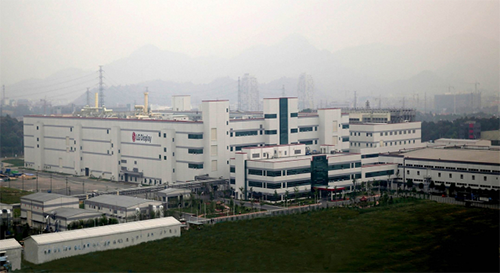The sale of LG Display’s liquid crystal display (LCD) plant in Guangzhou, China, is accelerating. Limited competitive bidding (auction) is expected to be conducted in the first half of the year for three Chinese companies and the preferred negotiator will be selected.
According to Korean media sedaily on April 2, LG Display has decided to sell its Guangzhou LCD factory (GP1 and GP2) through an auction transaction, and plans to conduct auction bidding at the end of this month. Three companies, including BOE (BOE), TCL CSOT and Skyworth, have been shortlisted. These Chinese companies have recently begun local due diligence work with acquisition advisors. A South Korean industry insider said, “The price is expected to be around 1 trillion won (5.35 billion yuan), but the sale price could be higher if competition among companies intensifies.”
Considering the nature of the equipment industry with high depreciation costs, the seller plans to accelerate the business consolidation process of the Chinese companies that declared the acquisition of the plant within a year of signing the share purchase agreement (SPA). The companies are also known to have high regard for LG Display’s LCD technology.LG Display has been looking to sell its only remaining LCD TV panel production plant, the Guangzhou plant, to liquidate its LCD business and shift its business model to OLED.The domestic LCD TV plant in South Korea ended production in production ends in 2022.
The Guangzhou plant is a 70:20:10 joint venture between LG Display, Guangzhou Development District and Skyworth. The capitalization is about KRW 2.13 trillion (RMB 11.4 billion) and the investment amount is about KRW 4 trillion (RMB 21.4 billion.) Mass production started in 2014 with a capacity of up to 300,000 units per month. Currently, its operation level is 120,000 sheets per month. It mainly produces 55, 65 and 86-inch LCD TVs.
In the LCD TV market, Chinese companies occupy most of the global market. The local company intends to expand its economies of scale by acquiring the Guangzhou plant. Since there is no investment in expanding new LCD TV facilities (CAPEX), acquiring another company’s business is the fastest way to secure capacity. For example, acquisition by BOE will expand LCD market share (by area) from 27.2% in 2023 to 29.3% in 2025. The Guangzhou plant is considered an attractive asset because it has customers from top global TV brands such as Samsung Electronics, LG Electronics and Sony.
LCD panel prices have fallen in recent years, with LG Display recording deficits of more than 2 trillion won ($10.7 billion) in both 2022 (-2.085 trillion won, or $11.15 billion) and 2023 (-2.5102 trillion won, or $13.43 billion). Consolidated debt ratio deteriorated from 215.3 percent in 2022 to 307.7 percent in 2023. As of the fourth quarter of last year, net borrowings stood at 13.366 trillion won (RMB 71.5 billion).
From LG Display’s perspective, if the sale is completed at a mid-to-high-end price of 1 trillion won, it will have access to investment funds to improve its financial structure and enhance the competitiveness of its OLED business. Unlike competitors such as Samsung Display and BOE, LG Display focuses on 6th generation small and medium-sized OLEDs, and its 8th.6th generation line investment plan has been postponed one by one. Financial problems due to deficits. Of the KRW1.2924 trillion (RMB6.9 billion) in funds raised through paid-in capital increase earlier this year, about KRW400 billion (RMB2.14 billion) has been decided to be used to supplement the existing investment in the 6th generation panel production line.
Generation 8.6 is a production line dedicated to medium- to large-sized displays such as TVs, monitors and tablet PCs. If the glass substrate for making OLEDs is increased from Gen 6 to Gen 8.6 investment, LG Display sources said, “We will consider the market outlook and financial strength before making a decision.”
According to a recent report by market research firm UBI Research, this year’s tablet market is expected to grow six to seven times over last year as Apple’s iPad, which is scheduled to be released this year, has decided to be equipped with OLEDs. The future also looks bright, with tablet OLED shipments expected to grow at an average annual rate of 24.1%, from 12 million units this year to 28.4 million units by 2028. From the perspective of OLED companies, this is a situation in which they need to invest aggressively. Kim Jong-bae, a researcher at Hyundai Motor Securities, explains, “It takes about two years to build an [OLED] factory, so LGD has to complete its investment by early 2026 for testing.”
Translated from :https://m.sedaily.com/
Post time: Apr-17-2024



